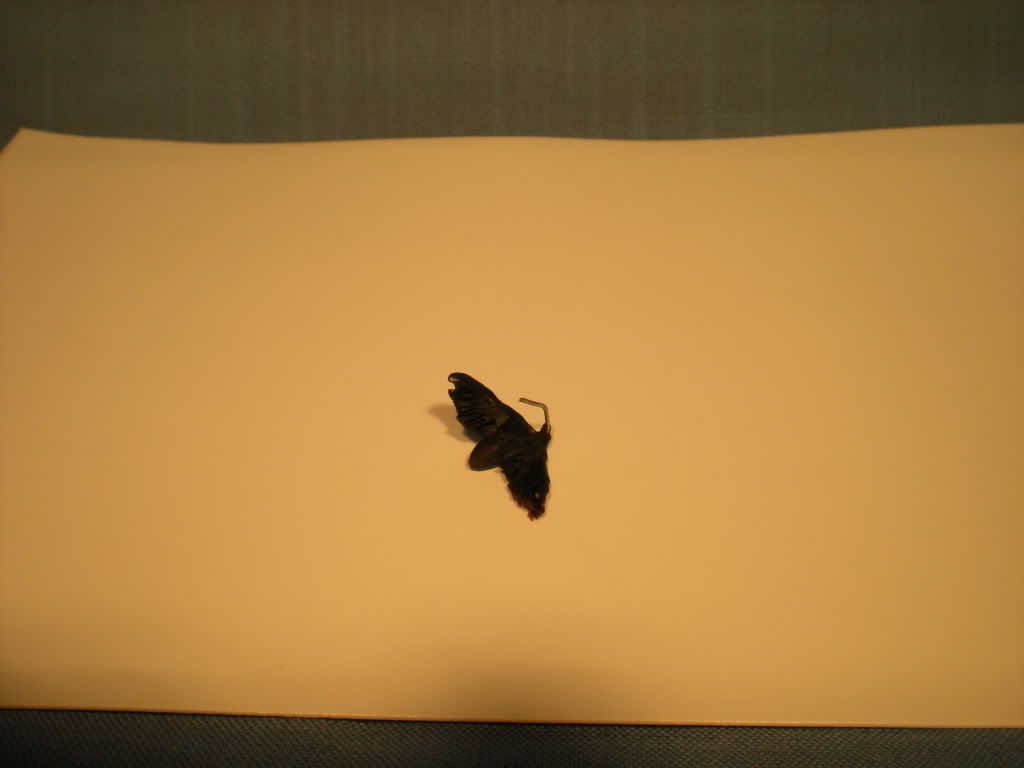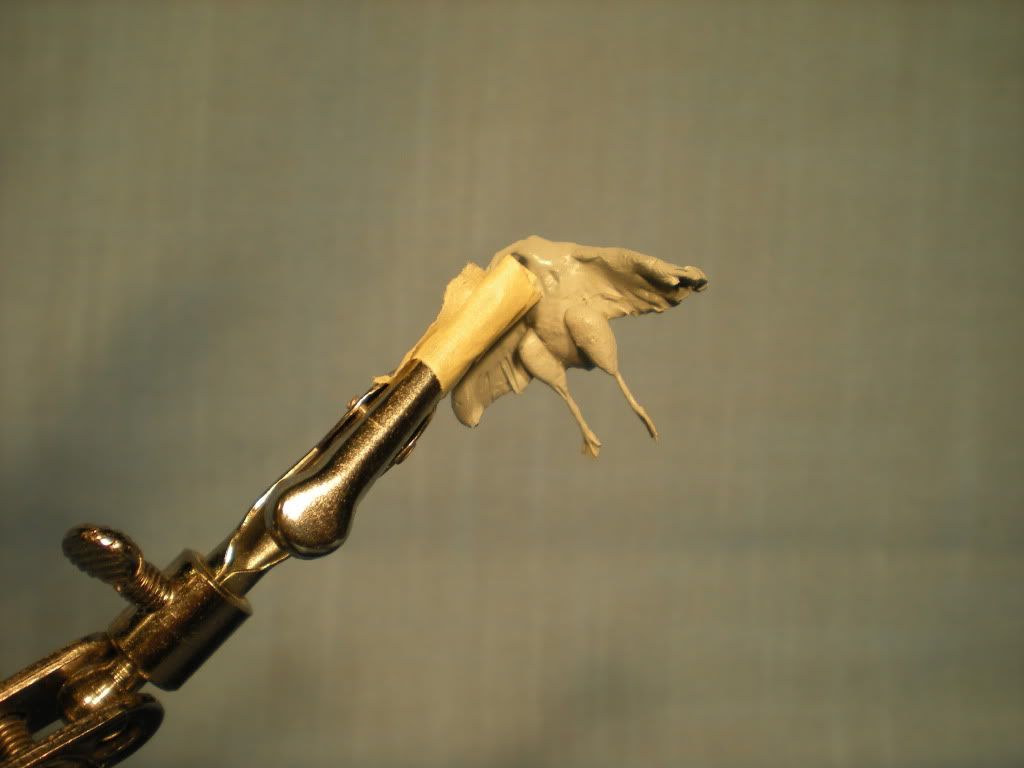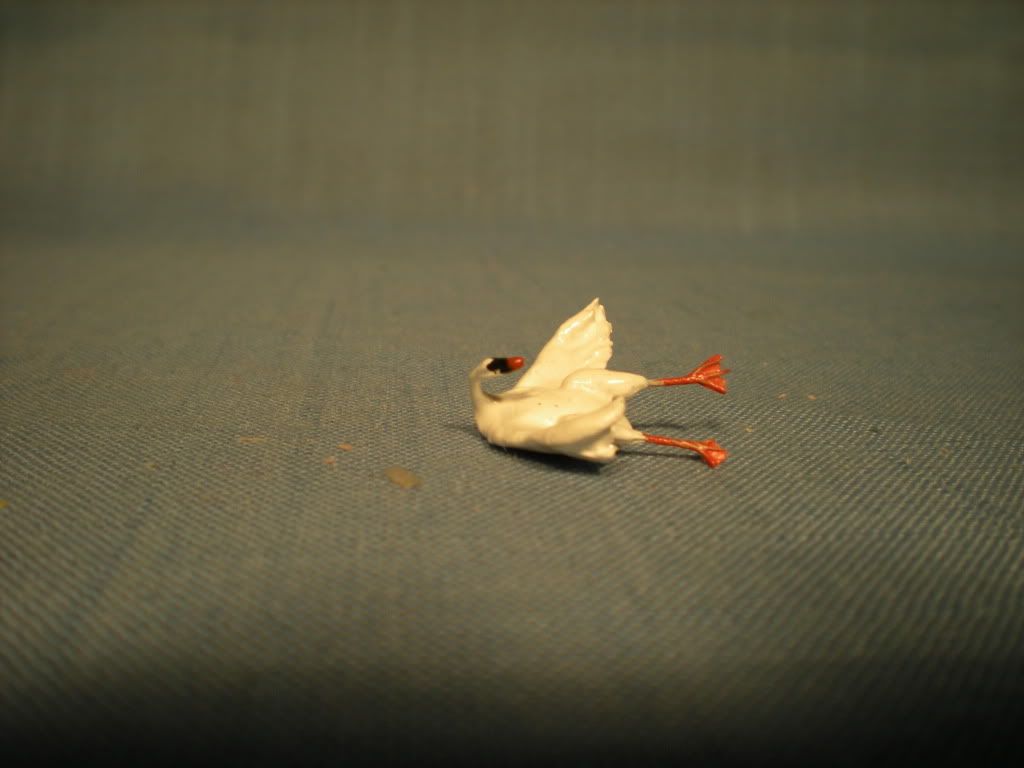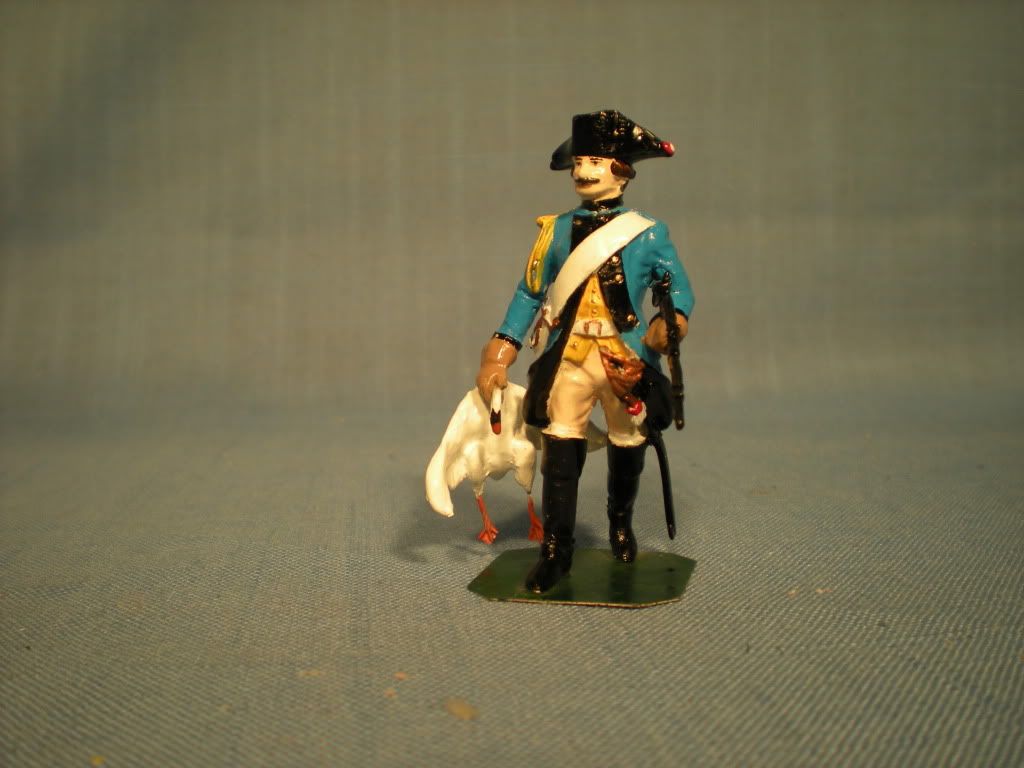I use Aves A&B for sculpting. I started out with Miliput. Both of them give me good results.
As far as blending putty in with a figure is concerned, I just smooth the putty in with my finger, or with the blunt end of the various dental picks and scrapers that I use, or the end of an old paintbrush. I can use water with Miliput and Aves to help do this, before the putty cures.
As far as the body putty Shep mentioned, I'm pretty sure you're right, it was automotive putty, though I don't know if it was Bondo specifically or some other brand. I've tried using automotive putty (not Bondo) but mixing the catalyst and the putty didn't come as easily as mixing parts a and b of Miliput or Aves.
I think that some used plumbing putties back in the day, and I seem to recall that Aves is close to the formula used in some 2-part plumbing epoxies.
I also use Sculpey, but not as much, because it has to be heated (baked) to cure the putty. But it works pretty well for me, too. The goose in this photo was an early exercise using Sculpey. Here is the body:

Yes, it looks like some kind of bug.
Drumsticks added:

Painted up (in gloss toy soldier finish):

and this is the finished piece, a Prussian dragoon returning with his supper:

I have a friend who is an experienced, skillful sculptor, and he gave me a tip that he uses a hair dryer to cure Sculpey, but I haven't tried that. But that would eliminate what I see as a drawback to heating it-baking it in the oven. I have been afraid that if I used Sculpey with other media, like styrene or resin, using an oven, even on the low setting required, would damage those pieces.
Anyway, I hope that helps, and please show us what you're working on!
Best regards,
Brad